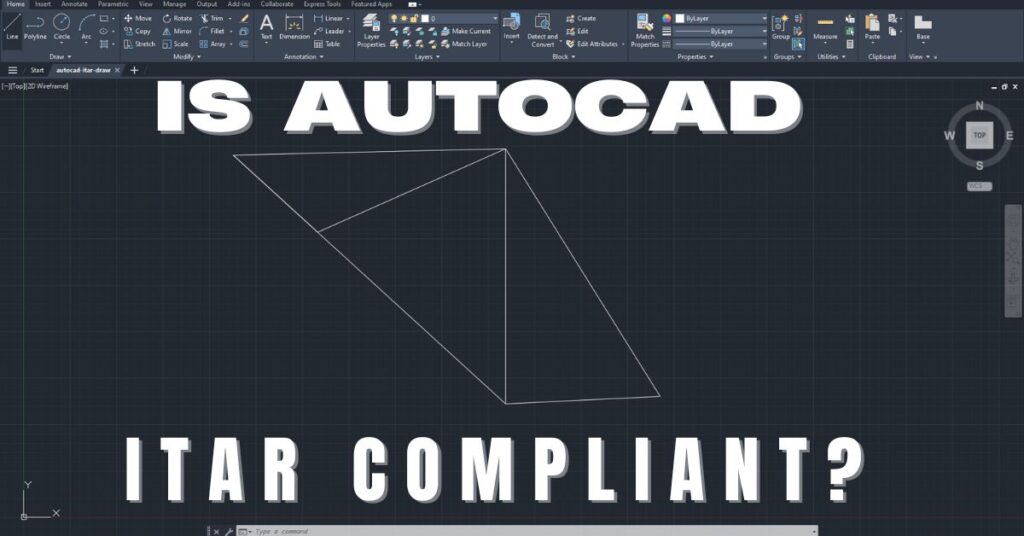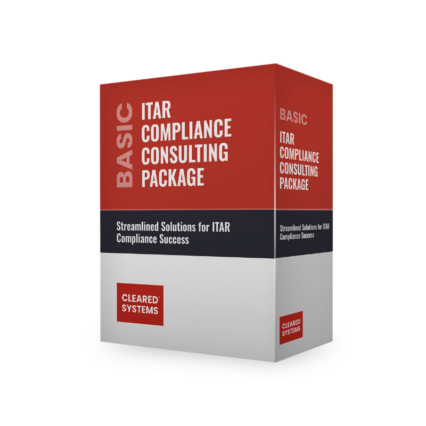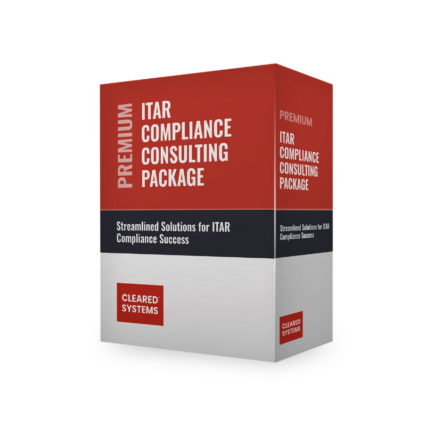In the intricate world of regulatory compliance, particularly under the stringent guidelines of the ITAR and EAR regulations, businesses operating within or in relation to defense and high-tech industries face significant challenges. Ensuring adherence to these complex regulations is not just a matter of legal necessity but also a crucial step in safeguarding national security interests. While various tools and strategies are employed to maintain compliance, one often overlooked yet essential element is the implementation of effective visitor management systems, mainly using visitor badges.
Visitor badges are pivotal in controlling access and monitoring movement within facilities handling ITAR and EAR-sensitive information and technologies. In this context, visitor badges are not mere identification tools. They are instrumental in enforcing compliance, preventing unauthorized access to controlled information, and mitigating the risk of non-compliance penalties. Understanding the role of visitor badges is imperative for companies striving to navigate the complexities of U.S. export law and maintain robust security protocols. This article delves into the significance of visitor badges in ITAR and EAR, exploring their functionality, compliance benefits, and best practices for implementation.
Understanding ITAR and EAR
Navigating the complexities of international trade and national security regulations is a formidable task for any business engaged in the global market. Central to this challenge are the ITAR and the EAR, two crucial frameworks governing the U.S. export and import of defense-related articles, services, and technologies. A thorough understanding of ITAR and EAR is beneficial and essential for compliance and operational success in industries dealing with sensitive materials and information.
ITAR: A Closer Look
The ITAR, administered by the U.S. State Department, specifically controls the export of defense-related articles and services listed on the USML. These regulations are designed to prevent the unauthorized transfer of sensitive defense technology, ensuring that such items do not fall into the hands of entities that may compromise U.S. national security. Compliance with ITAR is not optional; it is a legal requirement for companies manufacturing or exporting defense articles or services. Non-compliance can lead to severe penalties, including substantial fines and imprisonment.
EAR: Broadening the Scope
While ITAR focuses on military-specific items, the EAR, overseen by the U.S. Department of Commerce’s Bureau of Industry and Security (BIS), has a broader scope. It regulates the export of dual-use items, goods, and technologies primarily for civilian use but may have military applications, listed on the Commerce Control List (CCL). EAR’s purpose is to advance U.S. strategic interests by controlling the export of these items while promoting trade and fulfilling international commitments.
The Intersection of ITAR and EAR
Understanding the intersection of ITAR and EAR is crucial for businesses to determine which regulations apply to their products and services. This distinction is vital as it dictates the licensing requirements and compliance protocols that a company must follow. Misinterpreting or overlooking these regulations can result in “deemed export” violations, where the release of controlled information to foreign nationals is treated as an export to their home country, even if the transfer occurs within the U.S.
Understanding the intricacies of ITAR and EAR is not just about adhering to legal obligations; it’s about contributing to global security and maintaining the integrity of international trade. A deep understanding of these regulations is a cornerstone of responsible and successful operation for businesses involved in the export of controlled goods, services, or technology.
Concept of Visitor Management
In the sphere of corporate security and regulatory compliance, the concept of visitor management assumes a pivotal role. This is particularly true in environments that must adhere to stringent regulations such as the International Traffic in Arms Regulations (ITAR) and the Export Administration Regulations (EAR). But what is visitor management? It is the systematic process of identifying, tracking, and managing access to a facility or specific area. This process transcends mere knowledge of who is on the premises; it involves a comprehensive strategy to manage and document the movement of visitors to maintain security and ensure adherence to applicable laws and regulations.
Essence of Visitor Management in Compliance
For entities bound by ITAR and EAR, visitor management is an indispensable element of their security framework. The process goes beyond the mere physical oversight of visitors; it includes a strategic approach to protecting sensitive information and technologies. Effective visitor management systems are instrumental in thwarting unauthorized access to controlled areas and safeguarding information, thus diminishing the risks linked to potential espionage, theft, or the unintended revelation of sensitive data.
Challenges in Implementing Visitor Management
Deploying an effective visitor management system that aligns with ITAR and EAR requirements is challenging. These challenges encompass the identification of the specific mandates of these regulations, their integration into the existing security infrastructure, and the assurance that all personnel receive adequate training and comprehend the significance of compliance. Moreover, the system must be resilient to manage diverse situations, such as visits by foreign nationals, without undermining the organization’s adherence to compliance standards.
Technological Integration in Visitor Management
The incorporation of technology is a cornerstone in the advancement of visitor management systems. Cutting-edge solutions, including electronic visitor logs, biometric verification, and sophisticated identification systems, simplify the visitor management process and generate a verifiable and auditable record of visitor activity. This is crucial for substantiating compliance with ITAR and EAR.
The integration of technology into visitor management systems offers numerous advantages. Electronic visitor logs facilitate real-time tracking and historical analysis of visitor data. Biometric verification systems enhance security by ensuring that only authorized individuals gain access to sensitive areas. Advanced identification systems can quickly process and verify a wide range of credentials, making them invaluable for high-security environments.
Visitor Badges: A Tool for Compliance
In the intricate regulatory compliance landscape, particularly under ITAR and EAR, visitor badges emerge as a critical tool, serving much more than their basic identification function. These badges are a cornerstone in ensuring that businesses not only identify but also manage and monitor visitor access in a manner that adheres to stringent regulatory requirements
Functionality of Visitor Badges in a Compliance Context
Visitor badges in a compliance context go beyond simple name tags. They are sophisticated tools that can incorporate technology like QR codes, barcodes, RFID (Radio-Frequency Identification), or biometric data to control and track visitor access. This technology enables real-time monitoring of visitor movements, ensuring visitors do not access unauthorized areas. In industries where ITAR and EAR compliance is mandatory, this control and surveillance level is beneficial and essential.
Enhancing Security and Information Protection
The use of visitor badges is instrumental in enhancing physical security and protecting sensitive information. Organizations can enforce access restrictions more effectively by clearly identifying and categorizing visitors. Visitor badges can also be programmed to expire after a certain period, automatically restricting access. This is particularly crucial in facilities where even a brief lapse in security protocols can lead to significant breaches.
Visitor Badges and Deemed Exports
A key aspect of ITAR and EAR compliance is the concept of deemed exports, where disclosing technical data to foreign nationals is considered an export. Visitor badges are vital in preventing such inadvertent disclosures by ensuring that visitors, especially foreign nationals, are only granted access to non-restricted areas and information.
Record-Keeping and Audits
Another significant advantage of using visitor badges is in record-keeping and audits. Modern visitor management systems can store detailed logs of all visitor activities, which can be invaluable during compliance audits. These records provide tangible proof of the organization’s commitment to adhering to ITAR and EAR regulations, demonstrating the effectiveness of their visitor management system.
Case Study: Successful Implementation of Visitor Badges
AeroTech Dynamics, a leading manufacturer of aerospace components, grappled with the complexities of managing visitor access to its facilities. The company’s operations, often involving sensitive technology, were subject to stringent ITAR and EAR regulations. The frequent influx of visitors, including foreign nationals, for business meetings and facility tours posed a significant challenge. The existing visitor management system was insufficient, raising concerns about unauthorized access to sensitive areas and potential non-compliance with export control regulations.
Implementation of an Advanced Visitor Badge System
AeroTech Dynamics introduced an advanced visitor badge system to fortify its security and compliance measures. This system was designed with several key features:

Outcomes of the Implementation
The implementation of the new visitor badge system yielded several positive outcomes for AeroTech Dynamics:
- Improved Compliance with ITAR and EAR: The company could effectively manage and monitor visitor access, ensuring that sensitive areas and information were accessible only to authorized personnel.
- Enhanced Security: Real-time tracking and automated access control significantly mitigated the risk of security breaches.
- Positive Feedback from Auditors: The visitor badge system was commended during compliance audits as a robust measure for ensuring adherence to export control regulations.
- Increased Operational Efficiency: The streamlined visitor management process led to a more efficient allocation of resources and reduced administrative burdens.
AeroTech Dynamics: A Benchmark for Industry Best Practices
The case study of AeroTech Dynamics exemplifies how the effective implementation of visitor badges can significantly enhance compliance and security in a highly regulated industry. This case underscores that with the right approach and technology, visitor badges can be crucial in meeting regulatory requirements and fostering a culture of security and responsibility.
Deemed Exports and Compliance Challenges
A critical aspect of compliance with ITAR and EAR regulations is understanding and effectively managing deemed exports. Deemed exports refer to the transfer of controlled information or technology to a foreign national within the U.S., treated as an export to the foreign national’s home country. This concept presents unique challenges in compliance, especially in environments where international collaboration and the presence of foreign nationals are common.
Understanding Deemed Exports
The deemed export rule applies when a foreign national has access to controlled technology or technical data within the U.S. This could occur in various scenarios, such as during facility tours, meetings, or through electronic communications. For companies dealing with ITAR and EAR-controlled items, it’s crucial to recognize that providing foreign nationals access to controlled technology can unintentionally violate export control regulations.
Compliance Challenges in Managing Deemed Exports
Managing deemed exports involves several challenges:
- Identifying Controlled Technology and Data: Companies must determine what information and technology are controlled under ITAR and EAR. This requires a thorough understanding of the United States Munitions List (USML) and the Commerce Control List (CCL).
- Assessing Visitor Access: Determining the level of access granted to visitors, especially foreign nationals, is crucial. Companies must ensure that these visitors do not gain access to controlled technology or technical data.
- Training and Awareness: Employees must be trained to understand the implications of deemed exports and the importance of compliance. This includes recognizing situations where deemed exports might occur and knowing how to prevent them.
Strategies for Addressing Deemed Export Challenges
To address these challenges, companies can implement several strategies:
- Robust Visitor Management Systems: Implementing advanced visitor management systems, including visitor badges, can help control access to sensitive areas and track visitor activity.
- Clear Compliance Protocols: Developing clear protocols and procedures for handling situations that might lead to deemed exports is essential. This includes protocols for visitor interaction, data sharing, and access control.
- Regular Compliance Audits and Assessments: Conducting regular audits and assessments of compliance practices helps identify potential risks and areas for improvement.
Best Practices for ITAR and EAR Compliance Using Visitor Badges
Ensuring ITAR and EAR compliance is complex but crucial for businesses handling sensitive technology and data. Visitor badges play a significant role in this process, serving as an effective tool for managing access and monitoring visitors. To maximize their effectiveness, it’s essential to adhere to best practices in implementing and using visitor badges.
1. Comprehensive Visitor Screening
Organizations should implement a system where visitors, especially foreign nationals, can pre-register their details. This would help conduct the necessary background checks to ensure compliance with ITAR and EAR regulations. Additionally, inform visitors in advance about the compliance requirements and the security protocols they must adhere to while on the premises. This is not only reduces confusion among visitors but also results in a compliant visit and effective resource optimization.
2. Advanced Badge Features
Incorporate advanced technologies in badges, such as RFID tracking, biometric verification, and time-sensitive access features. This will help with accurate monitoring, effective visitor records management, strict access control, and automated visitor tracking. However, advanced features aren’t enough. Design badges with clear visual cues (like color coding) to indicate different levels of access and visitor types. This will help visitors quickly identify the areas they are authorized to access and the security protocols they must adhere to while on the premises. Organizations can ensure seamless visitor management and enhanced ITAR and EAR compliance by combining advanced technologies with clear visual cues.
3. Controlled Access Management
Visitor badges should be programmed only to allow access to appropriate or cleared areas. Failure to do this will likely result in EAR or ITAR violations, particularly through “deemed exports.” Access controls should be hardcoded into the visitor badge or through colors. Additionally, use a visitor management system that enables real-time tracking of visitor movements within the facility. This is critical where ITAR and EAR documentation must be as accurate as possible, and you want to account for the whereabouts of every visitor. Controlled access management is essential, where a timely intervention is required to prevent an ITAR or EAR violation. Additionally, this provides an audit trail where that can be essential during compliance assessments.
4. Training and Awareness
Training your employees remains the best way of achieving and maintaining EAR and ITAR compliance. Therefore, regularly train your employees on the importance of ITAR and EAR compliance, including how to interact with visitors and the role of visitor badges in maintaining security. Additionally, provide an orientation or briefing to visitors about the importance of compliance and the rules they must follow while on the premises.
5. Documentation and Record-Keeping
To ensure compliant visits, organizations should maintain detailed logs of visitor activities. Additionally, the visitor management system should be able to generate reports and logs that can be used for compliance audits. These logs should note entry/exit times and accessed areas to ensure meticulous record-keeping. Comprehensive logs contribute to meeting documentation requirements, a crucial aspect of complying with ITAR and EAR regulations. Knowing the purpose of each visit aids in monitoring and enforcing access restrictions and aligning export controls.
6. Regular Reviews and Updates
Regularly evaluate the visitor management system and badge metadata to ensure it meets current compliance standards and technological advancements. Additionally, ensure you update visitor management policies and practices as necessary to keep pace with changes in ITAR and EAR regulations.
Best Practices for ITAR and EAR Compliance Using Visitor Badges
Ensuring ITAR and EAR compliance is complex but crucial for businesses handling sensitive technology and data. Visitor badges play a significant role in this process, serving as an effective tool for managing access and monitoring visitors. To maximize their effectiveness, it’s essential to adhere to best practices in implementing and using visitor badges.
1. Comprehensive Visitor Screening
Organizations should implement a system where visitors, especially foreign nationals, can pre-register their details. This would help conduct the necessary background checks to ensure compliance with ITAR and EAR regulations. Additionally, inform visitors in advance about the compliance requirements and the security protocols they must adhere to while on the premises. This is not only reduces confusion among visitors but also results in a compliant visit and effective resource optimization.
2. Advanced Badge Features
Incorporate advanced technologies in badges, such as RFID tracking, biometric verification, and time-sensitive access features. This will help with accurate monitoring, effective visitor records management, strict access control, and automated visitor tracking. However, advanced features aren’t enough. Design badges with clear visual cues (like color coding) to indicate different levels of access and visitor types. This will help visitors quickly identify the areas they are authorized to access and the security protocols they must adhere to while on the premises. Organizations can ensure seamless visitor management and enhanced ITAR and EAR compliance by combining advanced technologies with clear visual cues.
3. Controlled Access Management
Visitor badges should be programmed only to allow access to appropriate or cleared areas. Failure to do this will likely result in EAR or ITAR violations, particularly through “deemed exports.” Access controls should be hardcoded into the visitor badge or through colors. Additionally, use a visitor management system that enables real-time tracking of visitor movements within the facility. This is critical where ITAR and EAR documentation must be as accurate as possible, and you want to account for the whereabouts of every visitor. Controlled access management is essential, where a timely intervention is required to prevent an ITAR or EAR violation. Additionally, this provides an audit trail where that can be essential during compliance assessments.
4. Training and Awareness
Training your employees remains the best way of achieving and maintaining EAR and ITAR compliance. Therefore, regularly train your employees on the importance of ITAR and EAR compliance, including how to interact with visitors and the role of visitor badges in maintaining security. Additionally, provide an orientation or briefing to visitors about the importance of compliance and the rules they must follow while on the premises.
5. Documentation and Record-Keeping
To ensure compliant visits, organizations should maintain detailed logs of visitor activities. Additionally, the visitor management system should be able to generate reports and logs that can be used for compliance audits. These logs should note entry/exit times and accessed areas to ensure meticulous record-keeping. Comprehensive logs contribute to meeting documentation requirements, a crucial aspect of complying with ITAR and EAR regulations. Knowing the purpose of each visit aids in monitoring and enforcing access restrictions and aligning export controls.
6. Regular Reviews and Updates
Regularly evaluate the visitor management system and badge metadata to ensure it meets current compliance standards and technological advancements. Additionally, ensure you update visitor management policies and practices as necessary to keep pace with changes in ITAR and EAR regulations.
Conclusion
In the world of regulatory compliance, particularly under the guidelines of ITAR and EAR, the role of visitor badges is both pivotal and transformative. Throughout this article, we have explored the multifaceted aspects of visitor badges, from enhancing security and compliance to effectively managing deemed exports and overcoming compliance challenges. Visitor badges are not just tools for identification; they are instrumental in safeguarding sensitive information and technology, ensuring controlled access, and maintaining a robust compliance posture. As regulatory landscapes evolve and security concerns become more complex, the importance of a well-structured visitor management system becomes increasingly apparent.
Are you looking to enhance your organization’s compliance and security protocols? Look no further! Our shop offers a range of visitor badge solutions tailored to meet ITAR and EAR compliance requirements. From advanced badge technologies to integrated visitor management systems, we provide the tools to secure your facility and protect sensitive information.
- Explore Our Products: Discover our selection of visitor badges featuring state-of-the-art technologies like RFID tracking, biometric verification, and time-sensitive access controls.
- Custom Solutions: Need a custom solution? Our team can work with you to create visitor badges that meet your specific needs and compliance requirements.
- Expert Guidance: Unsure about what you need? Our experts are here to guide you through selecting the right visitor management solutions for your business.
Visit our shop today to take the first step towards enhancing your security and compliance. Let us help you navigate the complexities of ITAR and EAR regulations with ease and confidence.
Share in Social Media
See More Case Studies

Securing Defense Contracts: A DFARS 252.204-7012 Compliance Case Study
Discover how Cleared Systems helped a Federal Contractor successfully achieve DFARS 252.204-7012 compliance by strengthening its cybersecurity posture, giving it a competitive edge when bidding for DoD Contracts.

What is GCC High? For ITAR & CMMC 2.0
Microsoft 365 Government Community Cloud (GCC) High is a specialized cloud solution tailored for U.S. federal, state, local, tribal, and territorial government organizations, as well as for contractors who hold or process data subject to specific security regulations. In this article, we will explore the features, benefits, and differences between Microsoft 365 GCC High and other Office 365 offerings.

Is AutoCAD ITAR Compliant? A Comprehensive Guide for Defense Manufacturers
Defense contractors and manufacturers working with sensitive military technologies face a critical question when selecting computer-aided design software: Is AutoCAD ITAR compliant? This question becomes

How to Get Help in Windows: Guide to Security and Compliance Support
In today’s digital landscape, ensuring your computer systems are secure and compliant with industry regulations is essential for both businesses and individuals. Windows, as one

Microsoft Copilot for GCC High: Enhancing Security and Compliance
In today’s fast-evolving digital landscape, organizations that handle sensitive data, particularly those in government sectors or defense contractors, face growing pressure to maintain strict security
Partner with Us for Compliance & Protection
We’re happy to answer any questions you may have and help you determine which of our services best fit your needs.
Your benefits:
- Client-oriented
- Security
- Compliance
- Peace of mind
- Efficiency
- Trust
What happens next?
Schedule an initial meeting
Arrange a discovery and assessment call
Tailor a proposal and solution



